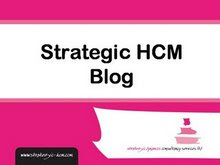The management thinking which relates most closely to my own viewpoint, and which I’m describing on Social Advantage, is Gary Hamel’s perspectives on management 2.0.
This was originally described in Gary Hamel’s book, ‘The Future of Management'. Hamel argues that management will evolve to look a lot like web 2.0, and will therefore be more adaptable, innovative and engaging. He lists the key criteria of both web 2.0 and management 2.0 as:
- Everyone has a voice
- The tools of creativity are widely distributed
- Its easy and cheap to experiment
- Capability counts for more than credentials and titles
- Commitment is voluntary
- Power is granted from below
- Authority is fluid and contingent on value-added
- The only hierarchies are "natural" hierarchies
- Communities are self-defining
- Individuals are richly empowered with information
- Just about everything is decentralized
- Ideas compete on an equal footing
- It's easy for buyers and sellers to find each other
- Resources are free to follow opportunities
- Decisions are peer-based.
These characteristics underpin the new list of 25 moon shots which is included in this month’s Harvard Business Review.
There are clearly some links between these and Social Advantage. Just as web 2.0 is also called the social web, management 2.0 is about a more social type of management.
But there are some differences too. Here’s why I believe Social Advantage provides a more powerful way of looking at opportunities for social innovation within your organisation:
1. A purer focus on social ways of managing
‘The future of management’, and the ‘25 moon shots’ are actually more about the need to innovate management practice than they are about social management (Hamel just guesses that the result of this innovation will be management 2.0).
For example, in the ‘moon shots’ article, Hamel suggests that to move on from management 1.0, organisations need to deal with a number of critical problems:
“How in an age of rapid change do you create organizations that are as adaptable and resilient as they are focused and efficient? How in a world where the winds of creative destruction blow at gale force can a company innovate quickly and boldly enough to stay relevant and profitable? How in a creative economy where entrepreneurial genius is the secret to success do you inspire employees to bring the gifts of initiative, imagination, and passion to work every day? How at a time when the once hidden costs of industrialization have become distressingly apparent do you encourage executives to fulfill their responsibilities to all stakeholders?”
I think Hamel’s thinking on management 2.0 gets coloured by some of these additional problems.
I’m not saying that management shouldn’t deal with these problems, or that organisations can’t innovate management in ways that aren’t associated with social capital.
But if you’re looking for ideas about managing the social aspects of your organisation, you’re more likely to find it here than in Hamel’s writings on management 2.0.
2. A focus on outcomes rather than activities
Hamel’s lists of web / management 2.0 characteristics, and the moon shots for management are about ways of managing. They’re approaches or activities, things that we can do:
- Ensure management serves a higher purpose
- Embed the ideas of community and citizenship within management systems
- Use natural as well as formal hierarchies
- Reduce fear and increase trust
- etc …
While these are all good things, they’re not actually going to be that useful unless they produce results. And in general, it’s a god idea to focus on the results not the activity.
Social capital is the outcome or result of management 2.0 / a more socially oriented way of managing. It makes sense to focus on this and then work out what activities are needed to produce it.
3. Not so tightly prescribed
As I said above, the moon shots for management are all good things. In general terms. But they’re unlikely to all work equally well for all organisations.
Social Advantage provides a framework for organisations to choose the type of social capital that will be most relevant for them, and to then identify the activities that will be most appropriate for the particular organisations, its context, challenges and capabilities.
More shortly…
Photo credit: Astronaut David R. Scott, Apollo 15 commander
.




















No comments:
Post a Comment
Please add your comment here (email me your comments if you have trouble and I'll put them up for you)